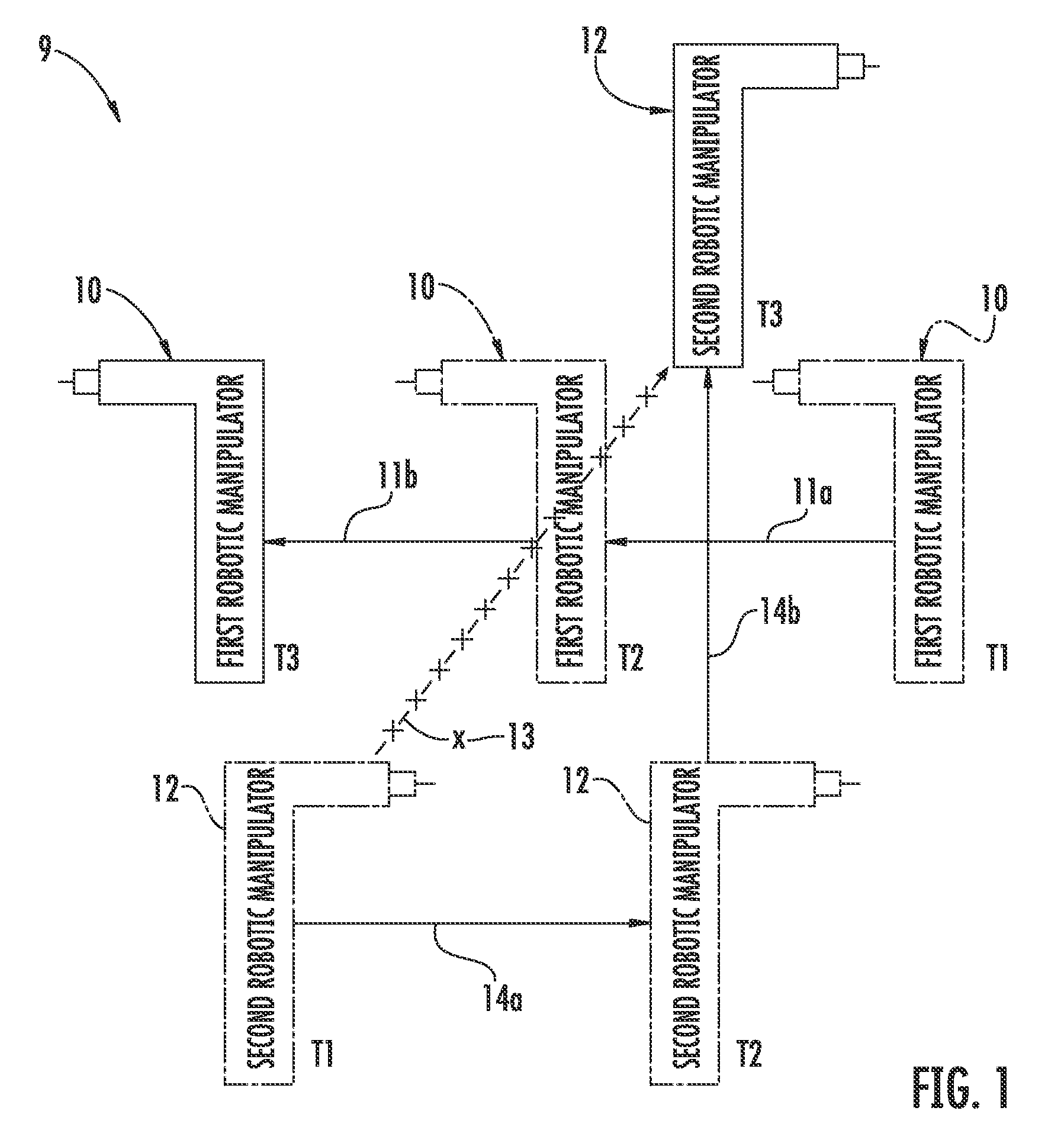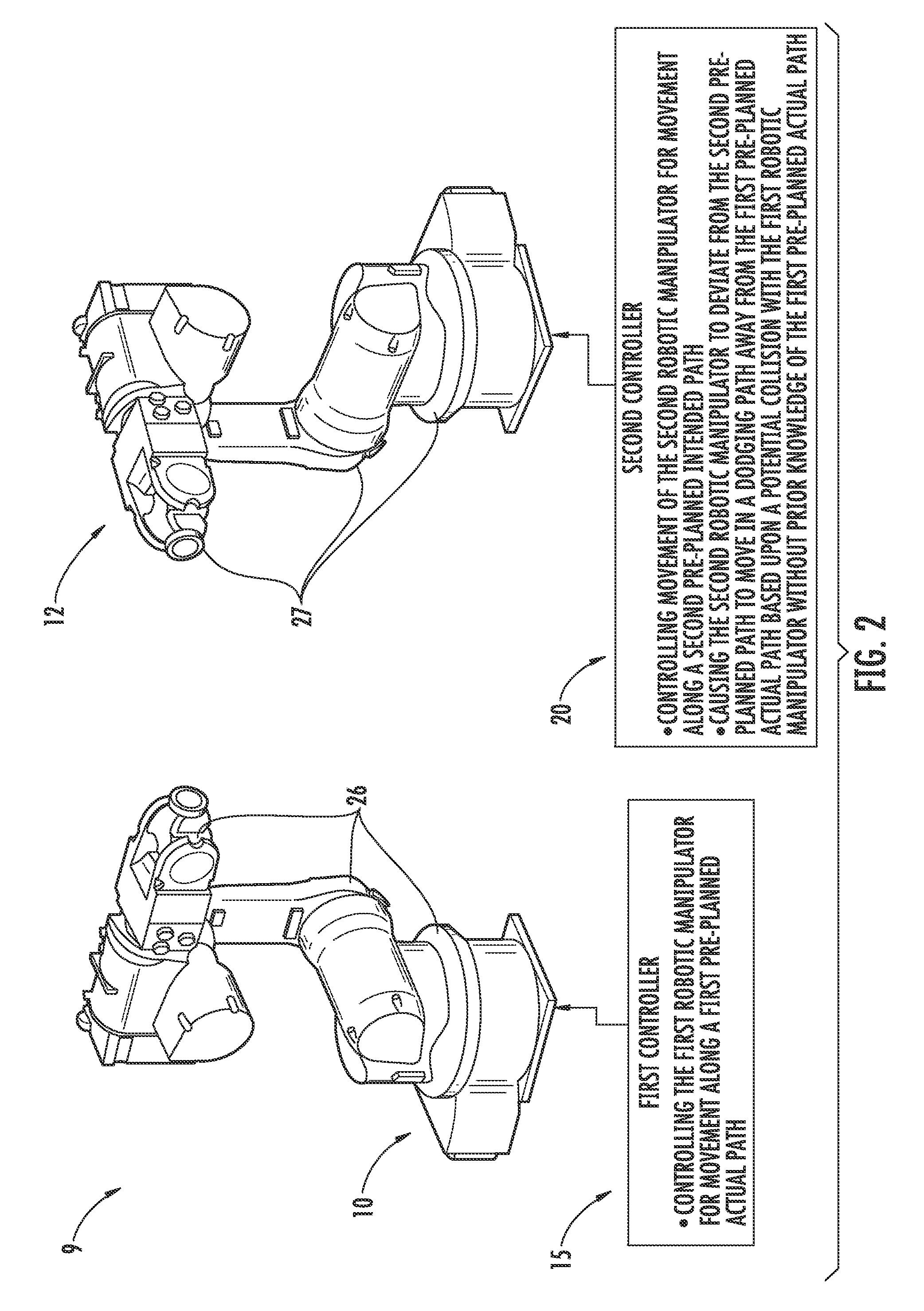Robotic apparatus implementing collision avoidance scheme and associated methods
a robotic apparatus and collision avoidance technology, applied in the field of robotics, can solve the problems of reducing the efficiency of a manufacturing plant, time-consuming, and disadvantages of the collision avoidance system of otera et al., and achieve the effects of reducing the time it takes to adapt the robotic apparatus, less processing power, and reducing the time it takes to determine potential collisions
- Summary
- Abstract
- Description
- Claims
- Application Information
AI Technical Summary
Benefits of technology
Problems solved by technology
Method used
Image
Examples
Embodiment Construction
[0031]The present invention will now be described more fully hereinafter with reference to the accompanying drawings, in which preferred embodiments of the invention are shown. This invention may, however, be embodied in many different forms and should not be construed as limited to the embodiments set forth herein. Rather, these embodiments are provided so that this disclosure will be thorough and complete, and will fully convey the scope of the invention to those skilled in the art. Like numbers refer to like elements throughout, and prime and multiple prime notations are used to indicate similar elements in alternative embodiments.
[0032]Referring initially to FIGS. 1-2, a robotic apparatus 9 implementing a collision avoidance scheme is now described. The robotic apparatus 9 includes a first robotic manipulator 10 and a first controller 15 configured to control the first robotic manipulator for movement along a first pre-planned actual path 11a, 11b. In addition, there is a second...
PUM
 Login to View More
Login to View More Abstract
Description
Claims
Application Information
 Login to View More
Login to View More - R&D
- Intellectual Property
- Life Sciences
- Materials
- Tech Scout
- Unparalleled Data Quality
- Higher Quality Content
- 60% Fewer Hallucinations
Browse by: Latest US Patents, China's latest patents, Technical Efficacy Thesaurus, Application Domain, Technology Topic, Popular Technical Reports.
© 2025 PatSnap. All rights reserved.Legal|Privacy policy|Modern Slavery Act Transparency Statement|Sitemap|About US| Contact US: help@patsnap.com



